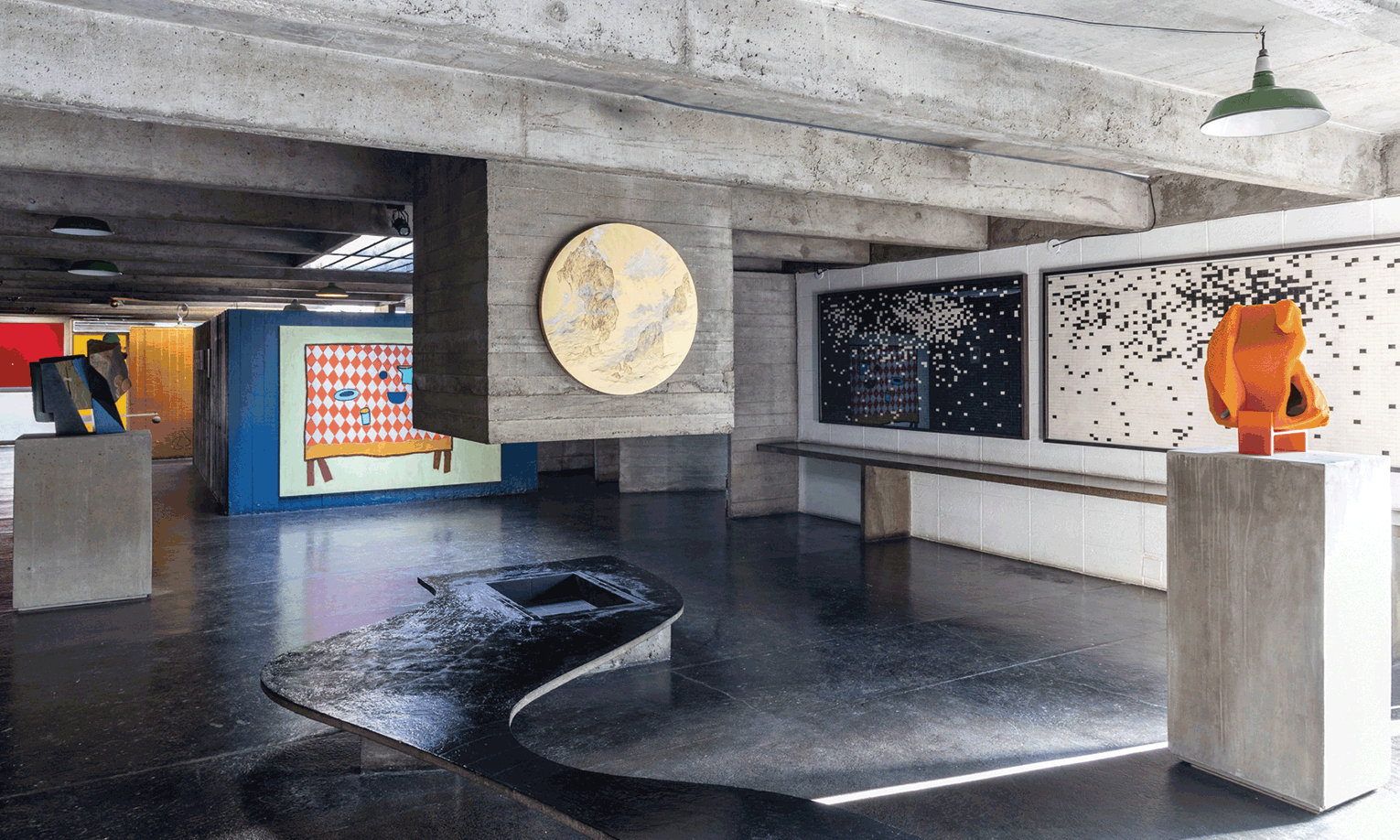Hanging headache: in the Casa Tomie Ohtake, one of two exhibition spaces for Aberto3, the art had to be installed without any new hooks or other hardware
Photo: Ruy Teixeira, Casa Tomie Ohtake
A series of pop-up exhibitions in Brazil with the mission of showing contemporary art in singular architectural spaces opened its third iteration last month in two Brutalist houses constructed in the 1970s in São Paulo. One was designed by the Brazilian architect Ruy Ohtake for his mother, Tomie Ohtake (1913-2015), the renowned Japanese Brazilian artist, and the other is a family residence designed by Chu Ming Silveira (1941-97), the Chinese Brazilian architect.
Launched by the London-based art adviser Filipe Assis, the annual series, dubbed Aberto (open), is intended to forge links between art, architecture and design from Brazil and abroad. For Aberto3 (until 15 September), Assis shared the curatorial duties with the curator Kiki Mazzucchelli and the designer Claudia Moreira Salles.
“We are used to seeing works in galleries or art fairs. They are fantastic spaces, but they don’t have the same rhythm,” Salles says. “You can create an effect of the work inside a home that you can’t achieve in either a gallery or a fair.”
The curators have already explored the Rio de Janeiro school of architecture, represented by Oscar Niemeyer, and the Paulista School of architecture, exemplified by João Batista Vilanova Artigas, in Aberto’s first and second editions, respectively.
Designer Claudia Moreira Salles flanked by Aberto founder Filipe Assis and curator Kiki Mazzucchelli
Photo: Ruy Teixeira, Casa Tomie Ohtake
“Doing this in a home gives you space for the works,” Salles says. “You have a unique journey, a rhythm within that home where you discover the works and they start to interact, finding their spaces within the residence.”
After an extensive search by Assis, who contacted several people in the search for architecturally compelling houses, the curators first visited Silveira’s house. “I had never heard of the house,” Assis says. “We went to visit and we immediately liked the space.” During the same trip, the trio also visited Ohtake’s home and studio, and decided to use both residences simultaneously for Aberto3.
“Conceptually, it was important to have a separation between the two houses so that it wouldn’t get too confusing,” Mazzucchelli says. “From the beginning, we wanted to separate the so-called masters from the contemporaries.” The installation at the Silveira residence features works made no later than the early 2000s by artists who achieved renown relatively late in their careers, while the focus at the Ohtake home is on contemporary artists, particularly on newly commissioned works.
Mazzucchelli adds that a goal of the presentation at the Silveira house was to find artists whose life and works parallel the architect’s own biography. Silveira was a woman and an immigrant whose work has been largely overlooked, with the exception of one of Brazil’s most ubiquitous urban fixtures, the egg-shaped telephone booth. Her residence features a selection of works by artists “who are today considered great names”, Mazzucchelli says, including Tunga, Wanda Pimentel, Abraham Palatnik, Anna Maria Maiolino and Carmen Herrera.
In the Ohtake home and studio, 70% of the art on view was commissioned specifically for the show. Many of the artists made site visits and discussed their projects with the curators. The artists with works on view there are some of the biggest names in Brazilian contemporary art, including Adriana Varejão, Beatriz Milhazes, Solange Pessoa, Luiz Zerbini, Laura Lima and Barrão. Visitors also get to see Ohtake’s studio, the last project she was working on when she died, and the original brushes and paints she was using at the time.
Works by Anish Kapoor and Artur Lescher in the Casa Chu Ming Silveira Photo: Ruy Teixeira
“For many of the works, when we saw them for the first time we immediately saw them in certain spaces in the homes,” Salles says. “Due to a relationship with the material, or the entrance of light, or a type of perspective, you already saw that work placed in that spot.” The pergola in the Silveira house, for instance, immediately struck the curators as the perfect site for pieces by Artur Lescher and Anish Kapoor. “From the beginning we could not imagine anywhere else,” Mazzucchelli says. “They fit perfectly in that space.”
Staging exhibitions in architecturally significant homes comes with certain challenges, which the curators have become accustomed to navigating by now. “Often the house is heritage-listed and protected, so we have restrictions on where and how to place the works,” Salles explains. “You can’t drill into the walls. There are many limitations.” At the Ohtake residence, the curators could not add any hooks or other hardware, and had to use the existing system for hanging the works they brought in.
“Each house has its own characteristics,” Salles says. “If we were to do another exhibition in other homes with the same works, the perspective would be different. It’s like a choreography—each work finds its own space.”

